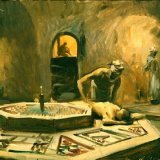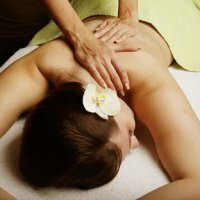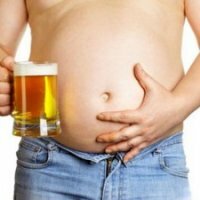History of the development of massage
 Massage is known for a long time, and it's hard to say when did it appear, and who first thought of it. Before us, unfortunately, not a single written source came to us, talking about where in the world and by whom a unique massage technique was developed. The history of the development of massage is not one millennium.
Massage is known for a long time, and it's hard to say when did it appear, and who first thought of it. Before us, unfortunately, not a single written source came to us, talking about where in the world and by whom a unique massage technique was developed. The history of the development of massage is not one millennium.
& lt;! - [if gte mso 9] - & gt; & lt;! - [endif] - & gt; & lt;! - [if gte mso 9] - & gt; & lt;! - [endif] - & gt; & lt;! - [if gte mso 10] - & gt; & lt;! - / * Style Definitions * / table. MsoNormalTable{ mso-style-name: "Ordinary table";Mso-tstyle-rowband-size: 0;Mso-tstyle-colband-size: 0;Mso-style-noshow: yes;Mso-style-priority: 99;Mso-style-qformat: yes;Mso-style-parent: "";Mso-padding-alt: 0cm 5. 4pt 0cm 5. 4pt;Mso-para-margin: 0cm;Mso-para-margin-bottom:.0001pt;Mso-pagination: widow-orphan;Font-size: 11. 0pt;Font-family: "Calibri", "sans-serif";Mso-ascii-font-family: Calibri;Mso-ascii-theme-font: minor-latin;Mso-fareast-font-family: "Times New Roman";Mso-fareast-theme-font: minor-fareast;Mso-hansi-font-family: Calibri;Mso-hansi-theme-font: minor-latin;Mso-bidi-font-family: "Times New Roman";Mso-bidi-theme-font: minor-bidi;} - & gt; & lt;! - [endif] - & gt;
If you hold your hand in a sore spot, the pain will gradually subside and pass. The instinctive craving for pressure and stroking is inherent in every person. From this kind of strokes and touches, massage as an art of treatment with hands developed.
The origin and meaning of the word "massage" remains a mystery. Linguists believe that the word "massage" came from the Arab mass - "gently press, knead," according to other versions the word is of Greek or Latin origin.
Already in the Middle Ages, it was known that massage can be used to relieve pain, treat joints and dislocations. Until now, when using massage, they use oils and emollients that have a double effect: they treat and moisturize the skin, making the massage pleasant and allowing the hands of the masseur to slide freely over the skin.
As the development of medicine, the techniques and techniques of massage were developed and improved, enriched with the experience of many generations of healers. Almost all doctors of the past were familiar with the rules of massage, without this their knowledge would be incomplete. Several centers of an especially wide application of the development of massage were formed.
India.
Ancient India and Tibet were familiar with the massage from 2000 BC.The Indian book "Ayurveda" mentions the technique and techniques of massage. So the Indians knew and valued the massage so high that they fixed it in the holy book. Indian massage consisted in kneading the muscles of the whole body, and it began with washing in the bath. India was the first country to combine a steam bath and massage. On the hot plates poured water, which evaporated, formed steam. When the skin was well hydrated, and the muscles warmed up, proceeded to massage. Stretched the body of a man and performed a massage of the limbs, back and abdomen.
In ancient times in India and Tibet, massage was used as a medicine and a relaxation tool, relieving fatigue.
Greece.
Massage and sauna were present not only in India. Ancient Greeks, Romans, Egyptians, also did massage in baths or after swimming, while rubbing the body with all sorts of means.
Much attention was paid to massage in ancient Greece. Greeks cared about the health of the male generation, and naturally a special popularity was enjoyed by a massage that exerts a healthful influence on the body. In Greece, medical education was considered complete and perfect if the doctor owned a massage. Greeks were familiar with hygienic, sports and therapeutic massage. The first doctor who dared to apply massage in practice was Gerodikos. He was the first to establish a connection between a massage and a sick organ. His follower became Hippocrates, he successfully practiced therapeutic massage and developed many techniques published in the collection "Code of Hippocrates".
Rome.
The Romans learned about the healing power of massage much later. The teachings came from Greece and the countries of Asia. Roman doctors were the first to classify the types of massage. Claudius Galen revealed the relationship between massage and physiological processes in the human body. Galen was a doctor at the gladiator school and had the opportunity to practice massage as a remedy. Information about his experiments, advice, descriptions and instructions on the application of individual elements, where the history of the development of massage art is traced, are preserved. Thanks to Galen, massage became the property of the Roman Empire. In Rome, massage was done in specially equipped rooms, using herbal oils and ointments. Visitors, preparing for the procedure, warmed up, performing gymnastic exercises.
When the Roman Empire fell, and Christianity began to preach asceticism and mortification of the flesh, the massage lost its former popularity, right up to the beginning of the Renaissance.
Unlike Greece, where massage was considered a privilege of the rich and simple people was not available, in Egypt it was widely known and accessible to everyone who comes to the term. And this procedure was so pleasant that every visitor was subjected to a massage. The most famous massage methods in Egypt were rubbing. This process was quite long and complicated. Massed, first of all, soared in a bath, after that they were stretched out on benches and massaged. Two people crushed and pressed on the body from different sides, massaging the muscles of the back and abdomen in all directions. After the main massage of the joints, muscles and ligaments was carried out.
Asia.
From the Roman Empire, massage penetrated into Asian countries, having acquired a second homeland. However, the technique and methodology of the countries differed. In Turkey and Persia, the masses resembled Greek and Roman. The procedure was carried out in a heated room, the body was massaged with the fingers using oils, and made a point massage.
In the countries of Central Asia, foot massage was practiced. Manipulations were carried out by the legs, and were reduced to the patient's blood coming out of the body. Currently, this massage is used as an exception for massaging large and hard muscles. The difference between the "oriental" massage is that hard, sharp techniques were used - pressure, blows, which were performed by elbows and knees.
Many treatises have been written, describing the original methods of treatment and prevention. The most famous author of Asia is Avicenna. He described a variety of methods for maintaining health, not lost relevance in our time.
At the same time, there were reports of the existence of a massage in exotic form among the tribes of Africa. The action itself had a cult character and bore the features of mysticism, the right to massage was only the priests.
Russia.
The history of massage of the Slavic tribes had some peculiarities. A common tradition of bathing in baths with the help of brooms, is nothing more than self-massage, and it is called "horsetail."The hot body was beaten with brooms softened in boiling water and poured cold water. The intensity of cardiac activity increased, the skin became elastic and smooth, many ailments of the musculoskeletal system and a cold were cured. The use of vegetable tinctures and decoctions helped to remove slags from the body.
Massage existed among all peoples and at all times, regardless of the stages of development and culture level, and this once again proves its obvious health benefits. Currently, massage is used in almost all areas of life, helping to overcome fatigue, regain muscle tone and cheerfulness to the body.



